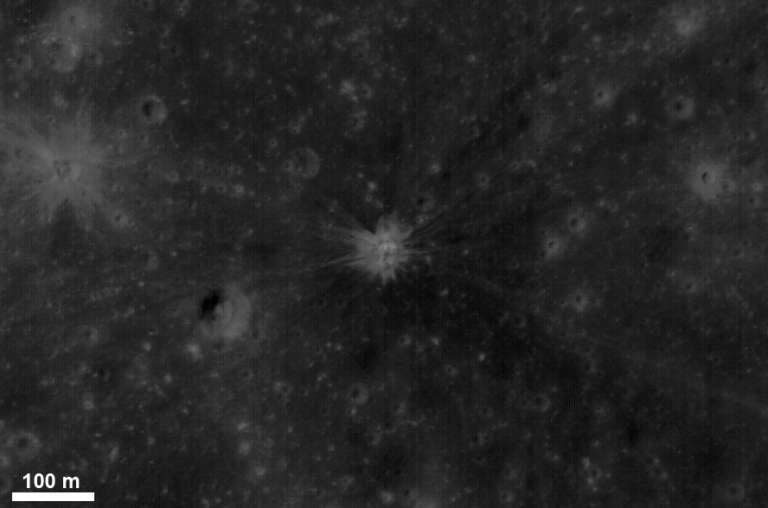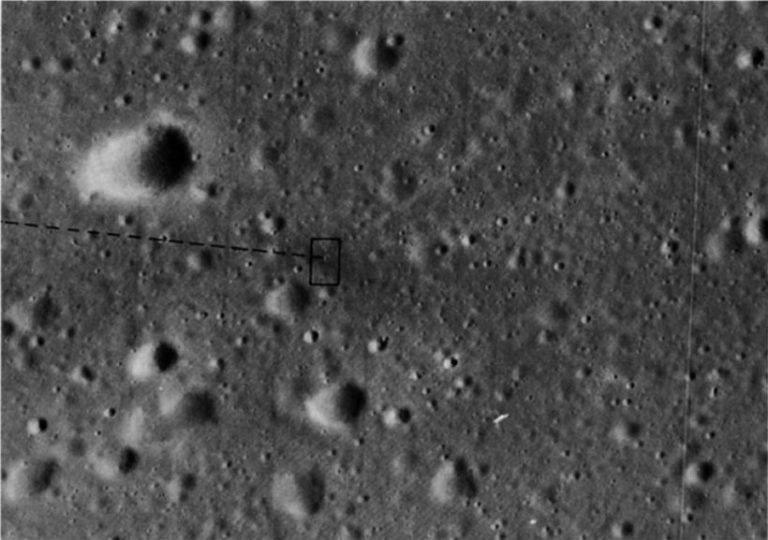Emily Lakdawalla • Oct 08, 2009
LROC nabs image of the Apollo 14 S-IVB impact site
As a reminder that we've been crashing stuff into the Moon for decades, the Lunar Reconnaissance Orbiter Camera (LROC) team released today a photo of the crater made by the spent upper stage of the Saturn rocket that lofted the Apollo 14 mission to the Moon. It was intentionally crashed on February 4, 1971 in part to remove it from orbit and in part to provide a "boom" of known time, location, and force to be recorded by the seismometer left behind from the Apollo 12 mission. The dry weight of the S-IVB (which had expended nearly all of its fuel) was about 14,000 kilograms, 7 times heavier than the Centaur that will be smashing into the Moon tomorrow as part of the LCROSS mission. The crater that the S-IVB left behind is fairly small but it did produce a spectacular (if dainty at only 1.5 kilometers across) set of rays, which were intriguingly light in some places and dark in others.

This is not the first time that the impact site has been imaged. Apollo 16 nabbed it in 1972. The dashed line indicates the trajectory of the incoming S-IVB:

I realize that once again, I'm posting an image of a human-made artifact on the Moon, which means I'm neglecting some absolutely wonderful photos recently posted on the LROC website of natural landscapes. I was particularly struck by the bizarre "Very Sinuous Rille" photo posted the other day -- you need to click through to the original image to see just how strange this feature is. I'd love to write more about it but am afraid I most likely won't have time.
Just for fun, here's a list from Wikipedia of all the human-built objects that have landed or crashed on the Moon, amounting to more than 170,000 kilograms of mass that's been transferred from Earth to the Moon and left there.
The Time is Now.
As a Planetary Defender, you’re part of our mission to decrease the risk of Earth being hit by an asteroid or comet.
Donate Today

 Explore Worlds
Explore Worlds Find Life
Find Life Defend Earth
Defend Earth

